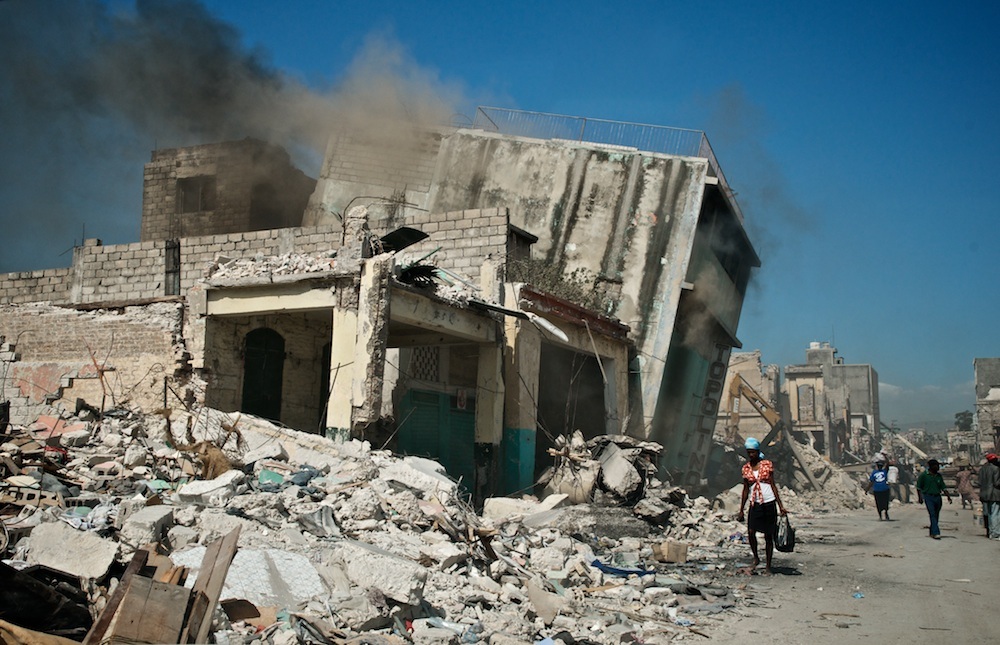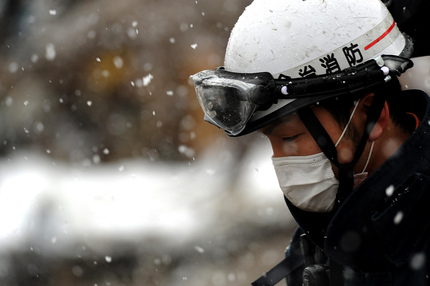ALL SHOOK UP!
How do people in different parts of the world cope with the aftermath of earthquakes?
The resource booklet is now available on the public part of the OCR Website. A link to it is here and have a good read through this publication. Well worth it!
Preparation TimeMs Winter has put together this quality work book that will help you to make sense of the SDME pre-release booklet. You should aim to work through it using the printed out SDME resource booklet.
If you can't see the booklet in the Scribd format, then click on the grey tab below to download in Microsoft Word format. Note. DADRADRSSF means:
|
Your browser does not support viewing this document. Click here to download the document.
|
Looking More Closely at San Francisco
These fantastic two resources were contributed by Rebecca Davis and contain activities, links and imagery to help you think about earthquake preparation on the east coast of the USA.
Turkey, October 2011
|
Wikipedia Says ......The Van earthquake was a destructive magnitude 7.1 Mw earthquake that struck eastern Turkey near the city of Van on Sunday, 23 October 2011 at 13.41 local time. It occurred at a shallow depth of 20 kilometres (12 mi), causing heavy shaking across much of eastern Turkey and lighter tremors across neighboring parts of the South Caucasus and Levant. According to Disasters and Emergency Situations Directorate of Turkey AFAD on 30 October, the earthquake killed 604 and injured are 4,152. At least 11,232 buildings sustained damage in the region, 6,017 of which were found to be uninhabitable. The uninhabitable homes left as much as 8,321 households with an average household population of around 7.6 homeless in the province; this could mean that at least around 60,000 people were left homeless.
|
|
New Zealand, September 2010
|
Wikipedia Says ..... The 2010 Canterbury earthquake (also known as the Christchurch earthquake or Darfield earthquake) was a 7.1 magnitude earthquake, which struck the South Island of New Zealand at 4:35 am on 4 September 2010 local time (16:35 3 September UTC). Aftershocks continued into 2012, with some causing significant damage themselves. The strongest to date, of magnitude 6.3, occurred on 22 February 2011. Because this was centred very close to Christchurch, it was much more destructive, with 185 people being killed. It was felt from Invercargill to Wellington. Mass fatalities were avoided partly due to there being few houses of unreinforced construction, although this was also aided by the quake occurring during the night when most people were off the street
|
|
Haiti, January 2010
|
What Wikipedia Says .... The 2010 Haiti earthquake was a catastrophic magnitude 7.0 Mw earthquake, with an epicentre near the town of Léogâne (Ouest Department), approximately 25 km (16 miles) west of Port-au-Prince, Haiti's capital. The earthquake occurred at 16:53 local time (21:53 UTC) on Tuesday, 12 January 2010.
By 24 January, at least 52 aftershocks measuring 4.5 or greater had been recorded. An estimated three million people were affected by the quake. The highest reliable death count was estimated at 220,000. Haitian government estimates were higher. The government of Haiti estimated that 250,000 residences and 30,000 commercial buildings had collapsed or were severely damaged. |
|
Have a go at the mock examination below. Page 1 - 9 is the Foundation Paper and Page 10 -16 is the Higher Paper - Created by Ms Walker
How will the exam work?
Objective: To understand how the exam is going to be structured, the types of questions and to get our timings right for each section.
There will be three sections to complete, A, B & C
Section A - The Background
Normally worth 10 marks and split into three or four questions worth between 1 to 5marks per question. You should spend no more than 15 minutes on this section.
This will test you on your ability to interpret data from the resource booklet (probably the first two or three resources in the booklet). Expect 'describe' and 'explain' type questions and be prepared to comment on sustainability e.g.
Example Questions:
Question 1 - Using Resource 1, explain why inertia may lead to people living in risky tectonic areas.
Question 2 - Using Resource 2, explain why the Honshu earthquake was more costly than the more powerful Northern Sumatra quake event.
Question 3 - Using Resource 3, explain how the earthquake risk can be monitored.
Question 4 - Using Resource 4, explain the link between earthquake fatalities and falling buildings and specify where in the world this risk is the highest.
Section B - The Opinions.
Normally worth 14 marks and the questions are more complex. Expect two or three questions worth between 5 to 8 marks each. You should spend no more than 20 minutes on this section.
There follows lots of information on earthquake events in Turkey, New Zealand and Haiti. This is to give you MEDC, NIC & LEDC comparisons.
Expect questions that ask you to comment on the different sustainability aspect of S.E.E (Social, Economic, Environmental) related to the stakeholders (people involved) and the location - possibly San Francisco.
Example Question: Not known until the SDME booklet is released.
Section C - The Decision
Normally worth 16 marks and you have one decision to make that could take up to two pages two write about. You need to spend the final 25 minutes on this section. It is really important that you don't overrun on the previous two sections as you will not have enough time to get excellent marks here unless you have enough time. Watch that clock!
Example Scenario (thanks to Phillip Corbett)
SECTION C – The Decision
Use resources 3, 5a, 5b, 5c, 6, 7 and 8 plus your own knowledge and any ideas from other resources in the booklet.
People have been trying to limit the damage caused by Earthquakes for hundreds of years with varying success. The Governor of California needs to make a sustainable decision on the best way to decrease the impacts of Earthquakes in the San Francisco Bay area. He is considering 3 options.
Option 1 – Move the amount of key facilities at risk away from areas most at risk from earthquakes.
Option 2 – Ensure all buildings adhere to strict building regulations and seismic retrofit those which don’t.
Option 3- Urban preplanning of the entire area to allow for emergency supplies, open areas etc and press for an increase in education regarding earthquakes.
TASK
Explain which Option you think would offer the governor the most sustainable way to decrease earthquake damage in the San Francisco Bay area. In your answer you should;
•State your chosen option
•Explain why you think your chosen option is more sustainable than other options
•Explain any disadvantage of your chosen option
•Give one possible advantage of each of your rejected options (16)
There will be three sections to complete, A, B & C
Section A - The Background
Normally worth 10 marks and split into three or four questions worth between 1 to 5marks per question. You should spend no more than 15 minutes on this section.
This will test you on your ability to interpret data from the resource booklet (probably the first two or three resources in the booklet). Expect 'describe' and 'explain' type questions and be prepared to comment on sustainability e.g.
Example Questions:
Question 1 - Using Resource 1, explain why inertia may lead to people living in risky tectonic areas.
Question 2 - Using Resource 2, explain why the Honshu earthquake was more costly than the more powerful Northern Sumatra quake event.
Question 3 - Using Resource 3, explain how the earthquake risk can be monitored.
Question 4 - Using Resource 4, explain the link between earthquake fatalities and falling buildings and specify where in the world this risk is the highest.
Section B - The Opinions.
Normally worth 14 marks and the questions are more complex. Expect two or three questions worth between 5 to 8 marks each. You should spend no more than 20 minutes on this section.
There follows lots of information on earthquake events in Turkey, New Zealand and Haiti. This is to give you MEDC, NIC & LEDC comparisons.
Expect questions that ask you to comment on the different sustainability aspect of S.E.E (Social, Economic, Environmental) related to the stakeholders (people involved) and the location - possibly San Francisco.
Example Question: Not known until the SDME booklet is released.
Section C - The Decision
Normally worth 16 marks and you have one decision to make that could take up to two pages two write about. You need to spend the final 25 minutes on this section. It is really important that you don't overrun on the previous two sections as you will not have enough time to get excellent marks here unless you have enough time. Watch that clock!
Example Scenario (thanks to Phillip Corbett)
SECTION C – The Decision
Use resources 3, 5a, 5b, 5c, 6, 7 and 8 plus your own knowledge and any ideas from other resources in the booklet.
People have been trying to limit the damage caused by Earthquakes for hundreds of years with varying success. The Governor of California needs to make a sustainable decision on the best way to decrease the impacts of Earthquakes in the San Francisco Bay area. He is considering 3 options.
Option 1 – Move the amount of key facilities at risk away from areas most at risk from earthquakes.
Option 2 – Ensure all buildings adhere to strict building regulations and seismic retrofit those which don’t.
Option 3- Urban preplanning of the entire area to allow for emergency supplies, open areas etc and press for an increase in education regarding earthquakes.
TASK
Explain which Option you think would offer the governor the most sustainable way to decrease earthquake damage in the San Francisco Bay area. In your answer you should;
•State your chosen option
•Explain why you think your chosen option is more sustainable than other options
•Explain any disadvantage of your chosen option
•Give one possible advantage of each of your rejected options (16)




